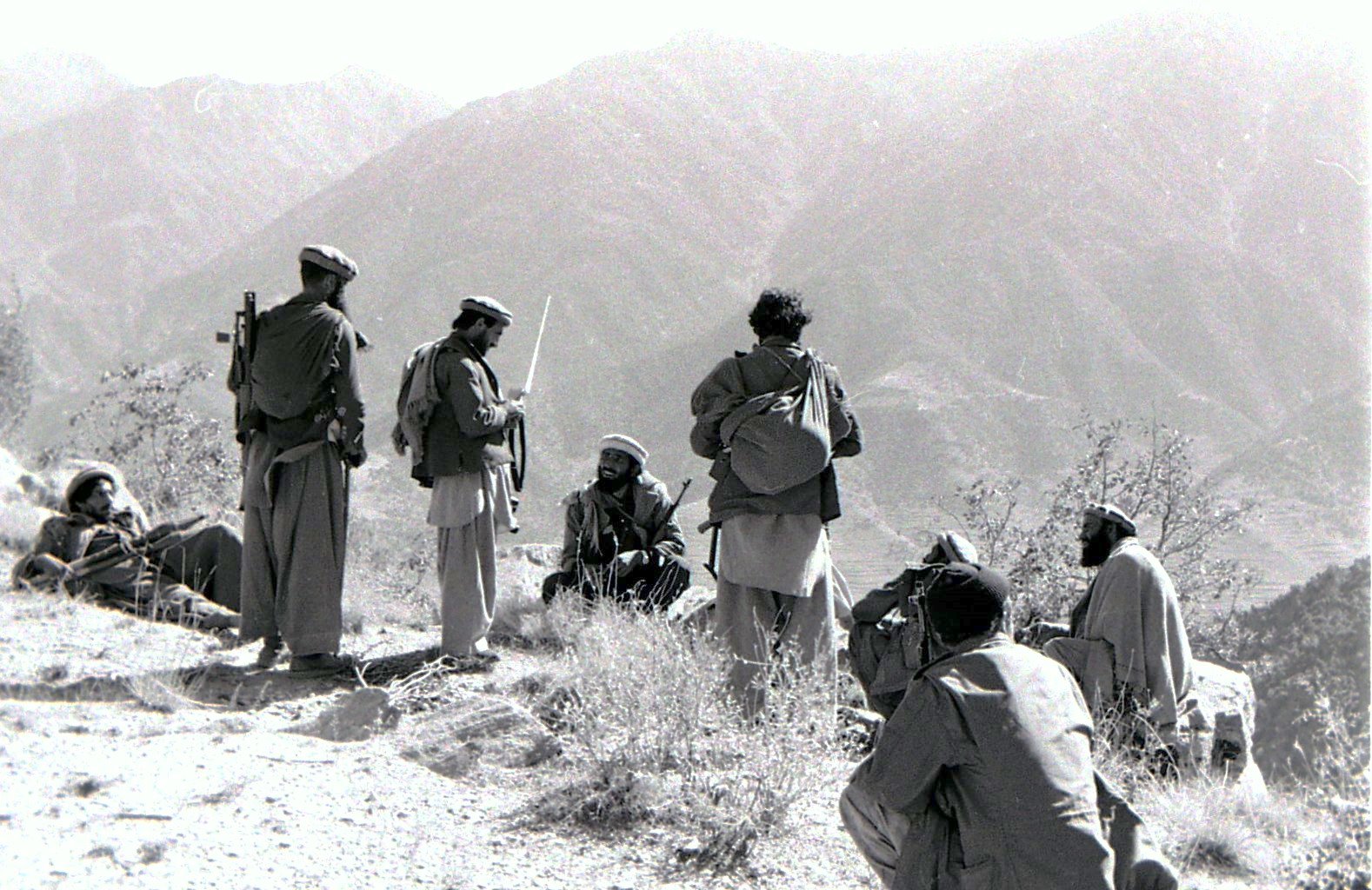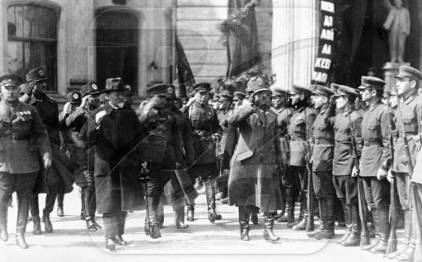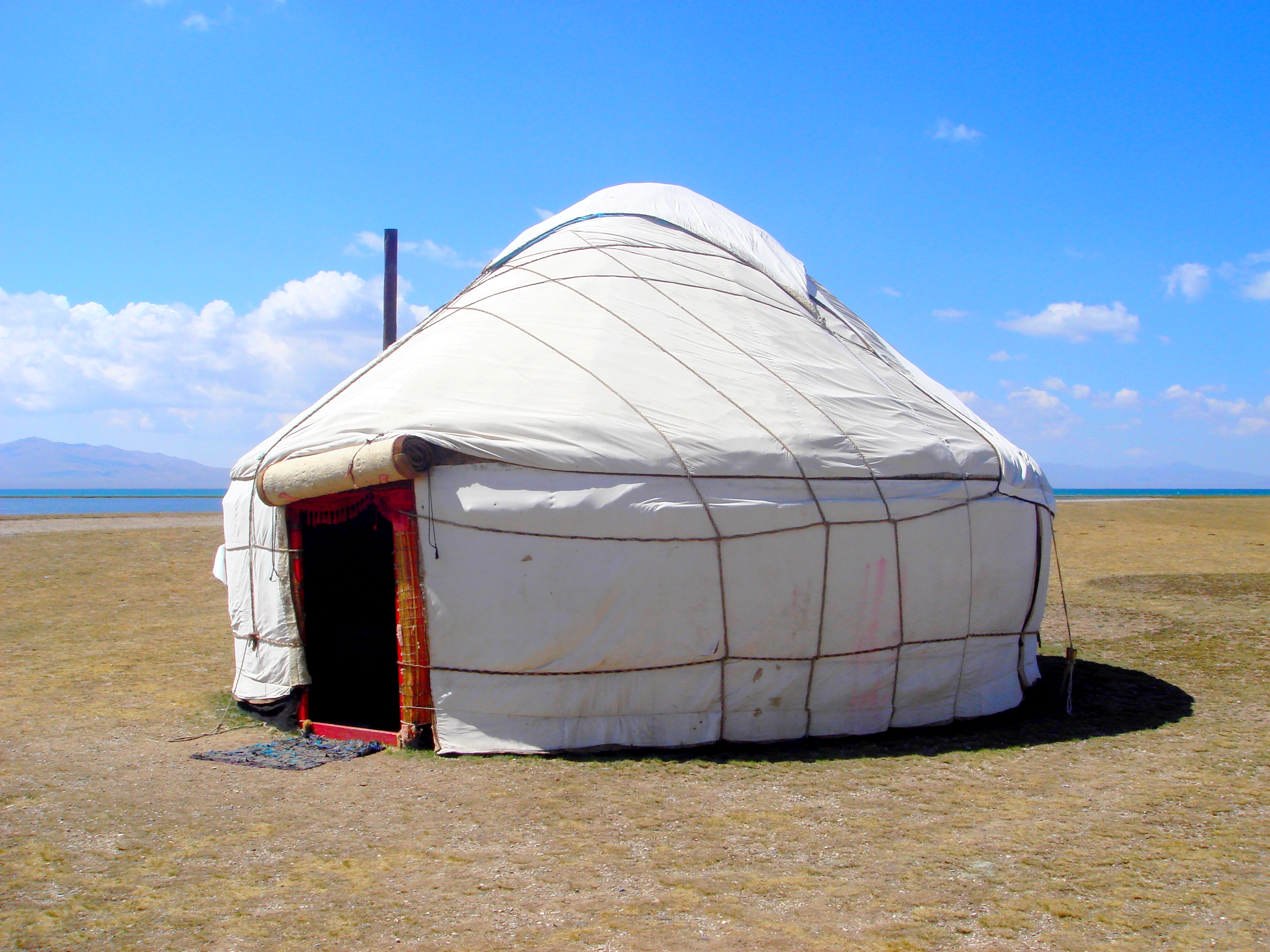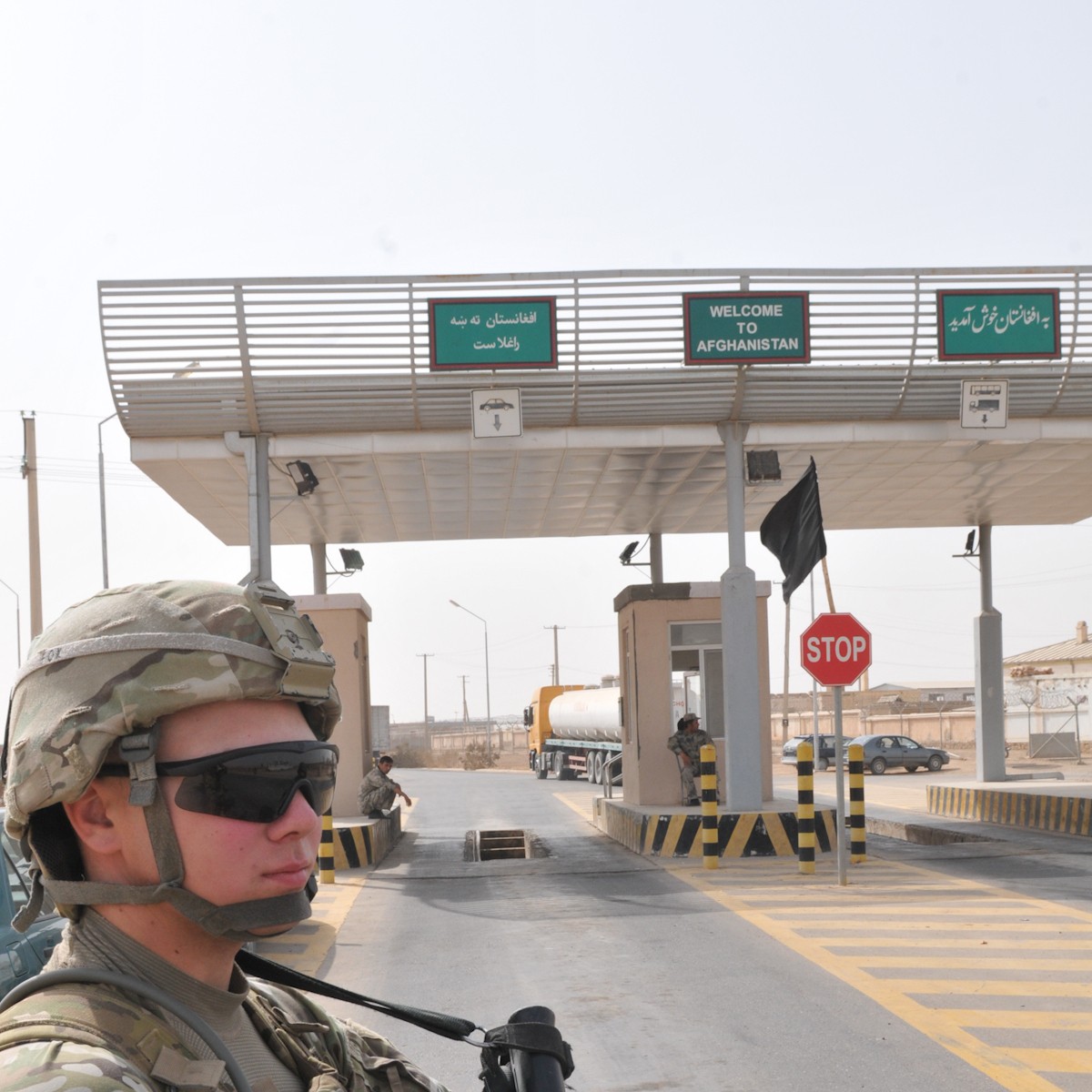|
Red Army Intervention In Afghanistan (1930)
The Red Army intervention in Afghanistan in 1930 was a special operation of the Central Asian Military District command to destroy the Basmachi economic bases and exterminate their manpower in Afghanistan. The operation was carried out by parts of the combined cavalry brigade under the command of the brigade commander Yakov Melkumov. Prelude In 1930, the Central Asian Military District command developed a plan to attack the Basmachi bases and destroy their manpower in northern Afghanistan, where active fighters against the Soviet government emigrated from Turkestan in the 1920s and systematically violated the Soviet-Afghan border. In addition, as early as the end of 1929, Soviet intelligence received reliable information from the recently defeated Emir of Afghanistan Habibullāh Kalakāni (Bacha-ye Saqao) about the planned tearing away of northern Afghanistan and the formation of a separate state on its territory, headed by Ibrahim Bek. At a meeting of elders in Kunduz i ... [...More Info...] [...Related Items...] OR: [Wikipedia] [Google] [Baidu] |
Basmachi Movement
The Basmachi movement (russian: Басмачество, ''Basmachestvo'', derived from Uzbek: "Basmachi" meaning "bandits") was an uprising against Russian Imperial and Soviet rule by the Muslim peoples of Central Asia. The movement's roots lay in the anti-conscription violence of 1916 that erupted when the Russian Empire began to draft Muslims for army service in World War I. In the months following the October 1917 Revolution the Bolsheviks seized power in many parts of the Russian Empire and the Russian Civil War began. Turkestani Muslim political movements attempted to form an autonomous government in the city of Kokand, in the Fergana Valley. The Bolsheviks launched an assault on Kokand in February 1918 and carried out a general massacre of up to 25,000 people. The massacre rallied support to the Basmachi who waged a guerrilla and conventional war that seized control of large parts of the Fergana Valley and much of Turkestan. The group's notable leaders were Enver Pasha ... [...More Info...] [...Related Items...] OR: [Wikipedia] [Google] [Baidu] |
Soviet–Afghan War
The Soviet–Afghan War was a protracted armed conflict fought in the Democratic Republic of Afghanistan from 1979 to 1989. It saw extensive fighting between the Soviet Union and the Afghan mujahideen (alongside smaller groups of anti-Soviet Maoism, Maoists) after the former militarily intervened in, or launched an invasion of, Afghanistan to support the local pro-Soviet government that had been installed during Operation Storm-333. Most combat operations against the mujahideen took place in the Afghan countryside, as the country's urbanized areas were entirely under Soviet control. While the mujahideen were backed by various countries and organizations, the majority of their support came from Pakistan, Saudi Arabia, the United States, the United Kingdom, China, and Iran; the American pro-mujahideen stance coincided with a sharp increase in bilateral hostilities with the Soviets during the Cold War (1979–1985), Cold War. The conflict led to the deaths of between 562,000 and ... [...More Info...] [...Related Items...] OR: [Wikipedia] [Google] [Baidu] |
Red Army Intervention In Afghanistan (1929)
The Red Army intervention in Afghanistan in 1929 was a special operation aimed at supporting the ousted king of Afghanistan, Amanullah Khan, against the Saqqawists and Basmachi. The situation in Afghanistan In 1919, diplomatic ties were established between the Soviet regime and the Emirate of Afghanistan – a development that was perceived by the British Foreign Service as contrary to UK interests. In April 1923, Amanullah Khan promulgated a new constitution in Afghanistan, heralding a program of secularisation that included prohibition of both polygamy and the marriage of minors, and lifting a legal requirement for women to cover their faces in public. These changes led to the creation of a powerful opposition, centred on Islamic leaders. In March 1924, a major anti-government uprising broke out in Hazarajat.. Meanwhile, Amanullah Khan had founded the Afghan Air Force, which was augmented with state-of-the-art De Havilland DH.9A light bombers gifted by the UK. In Septemb ... [...More Info...] [...Related Items...] OR: [Wikipedia] [Google] [Baidu] |
Afghan Civil War (1928–1929)
The Afghan Civil War was fought from 14 November 1928 to 13 October 1929. Rebelling, and subsequently governing Saqqawist (''Saqāwīhā'') forces under Habibullāh Kalakāni fought against various opposing tribes and rival monarchs in the Kingdom of Afghanistan, among whom Mohammed Nādir Khān eventually achieved a preponderant role. Despite early successes, such as the capture of Kabul and defeat of Amanullah Khan on 17 January 1929 or the capture of Kandahar on 3 June, the Saqqawists were eventually deposed by anti-Saqqawist forces led by Nadir on 13 October 1929, leading to Nadir's ascension as King of Afghanistan, who ruled until his assassination on 3 November 1933. The war began when the Shinwari tribe revolted in Jalalabad and drew a manifesto of 10 grievances, 5 of which related to Amanullah's meddling with the status of women. Although this revolt was quelled by a force led by Ali Ahmad Khan, a concurrent Saqqawist uprising in the north managed to capture the besiege ... [...More Info...] [...Related Items...] OR: [Wikipedia] [Google] [Baidu] |
Yurt
A yurt (from the Turkic languages) or ger ( Mongolian) is a portable, round tent covered and insulated with skins or felt and traditionally used as a dwelling by several distinct nomadic groups in the steppes and mountains of Central Asia. The structure consists of a flexible angled assembly or latticework of wood or bamboo for walls, a door frame, ribs (poles, rafters), and a wheel (crown, compression ring) possibly steam-bent as a roof. The roof structure is sometimes self-supporting, but large yurts may have interior posts supporting the crown. The top of the wall of self-supporting yurts is prevented from spreading by means of a tension band which opposes the force of the roof ribs. Yurts take between 30 minutes and 3 hours to set up or take down, and are generally used by between five and 15 people. Nomadic farming with yurts as housing has been the primary life style in Central Asia, particularly Mongolia, for thousands of years. Modern yurts may be permanently built ... [...More Info...] [...Related Items...] OR: [Wikipedia] [Google] [Baidu] |
Kunduz Province
Qunduz (Dari: ) is one of the 34 provinces of Afghanistan, located in the northern part of the country next to Tajikistan. The population of the province is around 1,136,677, which is mostly a tribal society; it is one of Afghanistan's most ethnically diverse provinces with many different ethnicities in large numbers living there.Archived aGhostarchiveand thWayback Machine https://repository.upenn.edu/cgi/viewcontent.cgi?article=1012&context=senior_seminar The city of Kunduz serves as the capital of the province. It borders the provinces of Takhar, Baghlan, Samangan and Balkh, as well as the Khatlon Region of Tajikistan. The Kunduz Airport is located next to the provincial capital. The Kunduz River valley dominates the Kunduz Province. The river flows irregularly from south to north into the Amu Darya river which forms the border between Afghanistan and Tajikistan. A newly constructed bridge crosses the Amu Darya at Sherkhan Bandar and the international trade is a large source ... [...More Info...] [...Related Items...] OR: [Wikipedia] [Google] [Baidu] |
'Aliabad
The town of Aliabad is the center of Ali abad District in Kunduz Province, Northern Afghanistan. It is situated in the central part of the district at 425 m altitude on the main road between Kunduz and Baghlan. Aliabad has one hospital and is located in an area of rainfed cropland. The town is located on the Kunduz River The Kunduz River ( ps, د کندز سیند; fa, رود قندوز) is a tributary of the Amu Darya in northern Afghanistan. It rises in Bamyan Province in the Hindu Kush, and in its upper reaches is also known as the Bamyan River or the Surkhab R .... On 12 June 2021, Taliban forces captured the village as part of their nationwide military offensive. See also * Kunduz Province References Populated places in Kunduz Province Villages in Afghanistan {{Kunduz-geo-stub ... [...More Info...] [...Related Items...] OR: [Wikipedia] [Google] [Baidu] |
Qataghan-Badakhshan Province
Qataghan-Badakhshan Province ( prs, ولایت قطغن-بدخشان) was a province located in Afghanistan. The province was originally created in 1890 when the districts of Qataghan and Badakhshan was separated from the Afghan Turkestan province. Administration of the province was assigned to the Northern Bureau in Kabul. Fayz Muḥammad Katib. Siraj al-tawarıkh. V. III. Afghanistan Digital Library. In 1963 Badakhshan included the districts of Baghlan, Pul-i-Khumri, Dushi, Dahan-i-Ghori, Khan Abad, Andarab, KunduzHazrat-i-Imam and Taloqan. In 1963 Qataghan-Badakhshan Province was abolished and since then the territory was divided into four separate provinces - Badakhshan, Baghlan, Kunduz, and Takhar.Ludwig W. Adamec. ''Historical and political gazetteer of Afghanistan Vol. 1. Badakhshan Province and northeastern Afghanistan''. Graz : Akad. Druck- und Verl.-Anst., 1972.p. 26. See also * Qataghan Province Qataghan Province (Persian language, Persian/Pashto language, Pa ... [...More Info...] [...Related Items...] OR: [Wikipedia] [Google] [Baidu] |
Khanabad River
The Khānabād River ( ps, د خان اباد سیند; fa, رود خانآباد) flows in the provinces of Takhar and Kunduz in northern Afghanistan. The Khanabad River is a tributary of the Kunduz River, which is in turn a tributary of the Amu River. Course The Khanabad rises in the south east of Takhar Province, in Warsaj District in the Hindu Kush. It flows north west, and receives a number of glacier-fed tributaries. As far as the small village of Shuri (a little north of Farkhar) the river flows in a narrow valley, then enters a broad plain. Its waters here are much used for irrigation. It then flows through Taloqan, the capital of Takhar Province, and a little after enters Kunduz Province. It then flows through Khanabad, turns west and flows to the north of Kunduz. It enters the Kunduz River 30 km past Kunduz. The total length of the river is about 400 km. [...More Info...] [...Related Items...] OR: [Wikipedia] [Google] [Baidu] |




